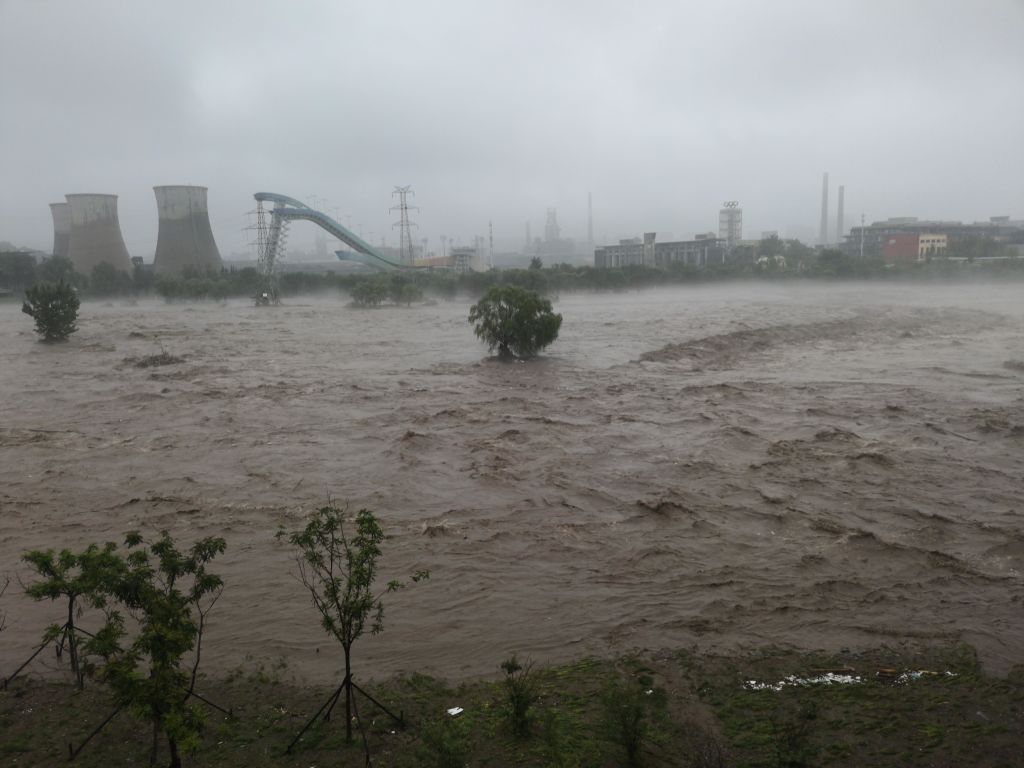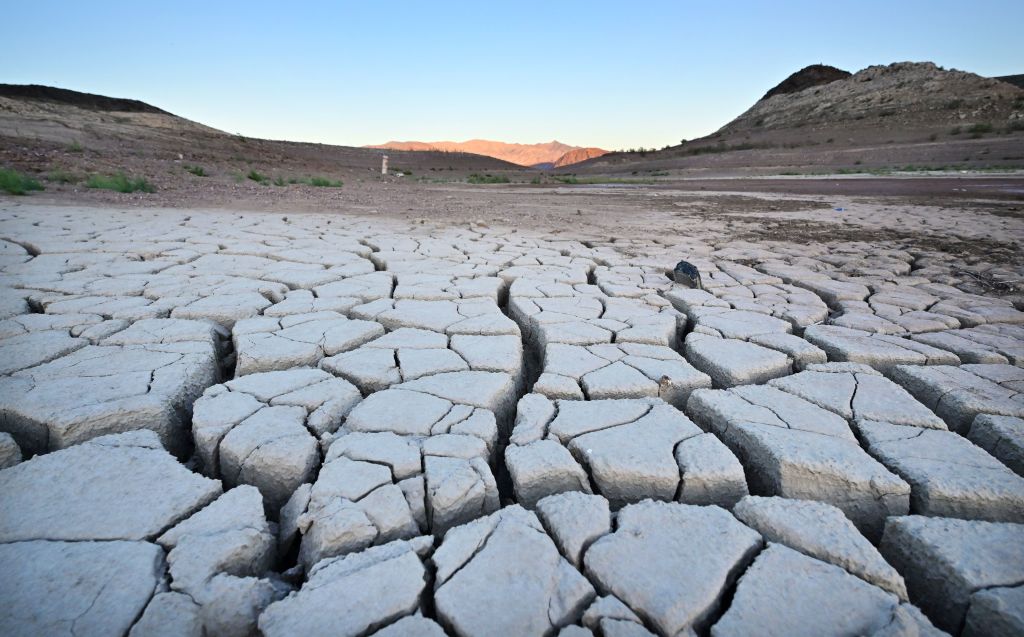We’re living in a pivotal moment in history, on the cusp of either sinking into a dark period of growing poverty, accelerating ecological destruction, and worsening conflict, or moving forward to a new age of equity, sustainability, and stewardship of the only planet in the universe where we know life exists. I believe a positive future is not only possible, but inevitable, but solving our current crises and moving along the path to that desired future will require new, concerted, and sustained efforts.
Nothing better exemplifies both the threat and the promise facing us than the challenge of water.
Water is special, and we need to understand it differently from other aspects of the natural world. The story of water and the history of humanity are entangled in what I describe as the Three Ages of Water, from our early evolution to the dystopian or sustainable future that is coming. The First Age of Water on Earth encompassed the billions of years from the formation of our planet through the extinction of the dinosaurs 65 million years ago, the long transition from mammals that survived that killer asteroid, to the ultimate evolution of Homo sapiens.
In these early years, human populations grew from thousands to the first few millions spread over the continents, to Mesopotamia and Egypt, the floodplains of the Indus Valley in southern Asia, along the great rivers of China, across to Australia, and ultimately to the vast rain forests, grasslands, and savannas of the Americas. The First Age saw our transition from bands of hunter-gatherers to fixed communities and organized cultures. It saw the creation of language, writing, art, religion, and intentional agriculture. The earliest empires began to manipulate the world—and the water around them—building rudimentary dams and aqueducts, writing the first water laws and institutions, and fighting wars over water.
More From TIME
The First Age came to an end when rising human populations, expanding cities, the local depletion of wild plants and animals, the spread of water-related diseases, and growing pressures on natural resources demanded that we forge a new relationship with water. The answer to these challenges was to be found in the science, engineering, and social advances that define the Second Age of Water.
Read More: Don't Ignore Your Climate Anxiety
It has become fashionable to think of the era in which we live as the Anthropocene—the epoch when humans have become the dominant force on Earth driving changes in habitats and the survival of species, rewriting genetic codes, transforming landscapes and the oceans, and altering the very climate of the planet. At its heart is the acknowledgment that humans, for better or worse, now control our own fate and the fate of countless other species.

This is the Second Age of Water—our own age. The Second Age encompasses the intellectual, cultural, and philosophical blossoming of civilization; the hydraulic marvels of the ancient Greeks and Romans; the artistic and scientific advances of the Islamic Golden Age and the Renaissance; and ultimately the engineering and technological revolutions of modern times. During the Second Age, we replumbed the entire planet. Humans built the first dams of gigantic scale to hold back flood waters, store water for dry periods, and produce reliable clean electricity. We learned about germs and diseases and their links to dirty water. We invented the first physical, chemical, and biological systems to purify wastewater. We built aqueducts not tens of kilometers long dug out of dirt like our Mesopotamian and Roman ancestors, but thousands of kilometers long, through or over mountains, from glaciers to deserts. We deployed large-scale irrigation systems and the technologies to pump water from deep underground so farmers could grow food in places and at times never before possible. And we began casting our eyes, instruments, and then mechanical avatars outward to other planets and stars, looking for water and other evidence that we’re not alone in the universe. We are all children of the Second Age of Water.
Modern civilization is built on these advances, and we’ve benefited from them in countless ways. We, mostly, live longer, healthier lives. We’re, mostly, richer economically, socially, and culturally. Technology and access to information have exploded, as has our ability to understand and manipulate the world around us. Cholera, typhoid, and dysentery have been vanquished in the richer nations. While hundreds of millions lack adequate food, we’re technically able to feed 8 billion people because of the Green Revolution and advances in irrigated agriculture. While billions still lack safe drinking water or sanitation or suffer from extreme hydrologic events, we know how to build and operate sophisticated water systems that can provide safe water, take away and treat wastewater, and protect us from floods and drought. We take most of it for granted.
The Second Age brought great benefits to society, but it also created unintended consequences. By the twentieth century, we started to see and understand the first evidence of the loss of nature, the rise of environmental problems as the Industrial Revolution accelerated and populations grew exponentially, the first world wars, and skyrocketing pressures on natural resources. Rivers treated as dumps for our waste began to catch fire and die. While we know how to provide safe water and sanitation to all, deep “water poverty” persists and billions of people lack access to basic water services. Despite advances in medical knowledge, many water-related diseases persist, including new illnesses associated with pollutants like mercury, lead, pesticides, and complex agricultural and industrial chemicals. Violence associated with competition for access and control of water resources has worsened, as have intentional attacks on water systems during regional, religious, economic, and ideological conflicts around the world, as we’ve seen in recent years in Iraq, Syria, Ukraine, and elsewhere. Peak water limits are being reached as rivers run dry, aquifers are depleted, and ecosystems are destroyed.
Most worrisome to the future of water resources—and humanity—is climate change. As the twentieth century ended, scientists found irrefutable scientific evidence that the combustion of fossil fuels and the destruction of forests are altering the very climate of the planet, with accelerating impacts in every community and for every natural resource, especially water resources, changing flood and drought risks; melting ice caps, glaciers, and mountain snow; increasing demand for water to grow food; and damaging aquatic ecosystems.
In short, the end of the Second Age of Water has become a race between the growing risks of ecological collapse, massive economic inequality, and political conflict, and the growing efforts to apply our hard-earned knowledge and technologies to prevent global disaster. It’s an awkward time: the awesome power to reshape the planet has come before we’ve fully embraced the idea that we must live sustainably on Earth; matured enough politically and socially to put aside prejudices, hatreds, cultural differences, and the baser instincts that threaten our very existence; or truly mastered the technologies that can both destroy and save us.
Humanity has a decision to make. We stand today at the brink of a new age, at a fork in the road of our own survival. We can become another extinct species, a blink in time in the natural history of the earth, or we can recognize that water is so vital to our continued existence that we must find a new way to live with it, manage it, and protect it. A bad future is possible; it’s just not the future we would choose if we had a choice.
The good news is we have that choice: we can envision a positive future, a path to get there, and we can take the steps along that path.
In recent years, scientists and academics from multiple disciplines have begun to piece together solutions to the separate challenges of energy, agriculture, forestry, fisheries, climate, and, underlying all of it, water, and to offer a different vision—a vision of a way forward to a positive future. It is time to acknowledge both the benefits of the Second Age of Water and the need to move to the Third Age where we address the growing failures surrounding us and make the technological and social transition to sustainability. That transition won’t be easy, but it is both necessary and possible.
In Lewis Carroll’s 1865 book Alice’s Adventures in Wonderland, Alice asks the Cheshire Cat, “Would you tell me, please, which way I ought to go from here?” The Cheshire Cat replies, “That depends a good deal on where you want to get to.” Two paths lie before us: one to the dystopian visions of our sci-fi novels, apocalyptic movies, and pessimistic doomsayers; the other to a positive, sustainable world. Just as we can imagine a disastrous future, we can imagine a positive one, with a balance between humans and nature, growing equality and social cohesion, and healthy, stable societies. That’s the future I focus on in the Third Age of Water, one that includes smart, successful, sustainable solutions to our water problems.
We are learning how to weave together a rich tapestry of actions, decisions, and policies of individuals, communities, and countries around the world, sometimes in surprising places and surprising ways, to address the unresolved water challenges of the Second Age. We know how to provide safe water and sanitation to everyone on the planet—no magic new technologies must be invented. We know how to use water more productively and efficiently to do the things we want as evidenced by the fact that we’re actually dramatically reducing total water use in the U.S., despite a growing economy and population. We know how to clean up and reuse the most contaminated wastewater, as is already being done in Singapore, Israel, and parts of California. We are learning how to restore and protect natural ecosystems that have suffered from our past abuse, including removing river-destroying dams like the Elwha and Klamath river dams in the western U.S. and protecting and restoring wetlands and fisheries. We are coming to grips with the need to resolve disputes over water peacefully and diplomatically, rather than with violence. We are starting to put in place energy and water policies that can reduce the emissions of climate-altering gases while also making our water systems more resilient to those climate impacts we can no longer avoid.
I believe that a positive future in the Third Age of Water is not only possible but inevitable. Indeed, this optimism has permitted me to continue working on the critical global challenges of climate, water, and sustainability for four decades. Perhaps that’s because the alternative is simply too depressing to accept. It would be a cosmic shame if, alone in this small corner of the universe, our spark of intelligent life was not quite intelligent enough to overcome the challenges of living on a finite, delicate planet and fell back into a dark age of chaos, or, worse, went the way of the dinosaurs.
That’s possible. But it needn’t be that way. If we fail to achieve a positive future for water, it won’t be because we can’t. It will be because we didn’t. The hopeful vision for water I offer is reachable and the blueprint for it is already apparent in innovative, successful water efforts under way around the world. Let’s accelerate the transition to this Third Age of Water.
This essay includes excerpts from Gleick's new book, The Three Ages of Water: Prehistoric Past, Imperiled Present, and a Hope for the Future (PublicAffairs/Hachette 2023)
More Must-Reads from TIME
- Breaking Down the 2024 Election Calendar
- How Nayib Bukele’s ‘Iron Fist’ Has Transformed El Salvador
- What if Ultra-Processed Foods Aren’t as Bad as You Think?
- How Ukraine Beat Russia in the Battle of the Black Sea
- Long COVID Looks Different in Kids
- How Project 2025 Would Jeopardize Americans’ Health
- What a $129 Frying Pan Says About America’s Eating Habits
- The 32 Most Anticipated Books of Fall 2024
Contact us at letters@time.com
